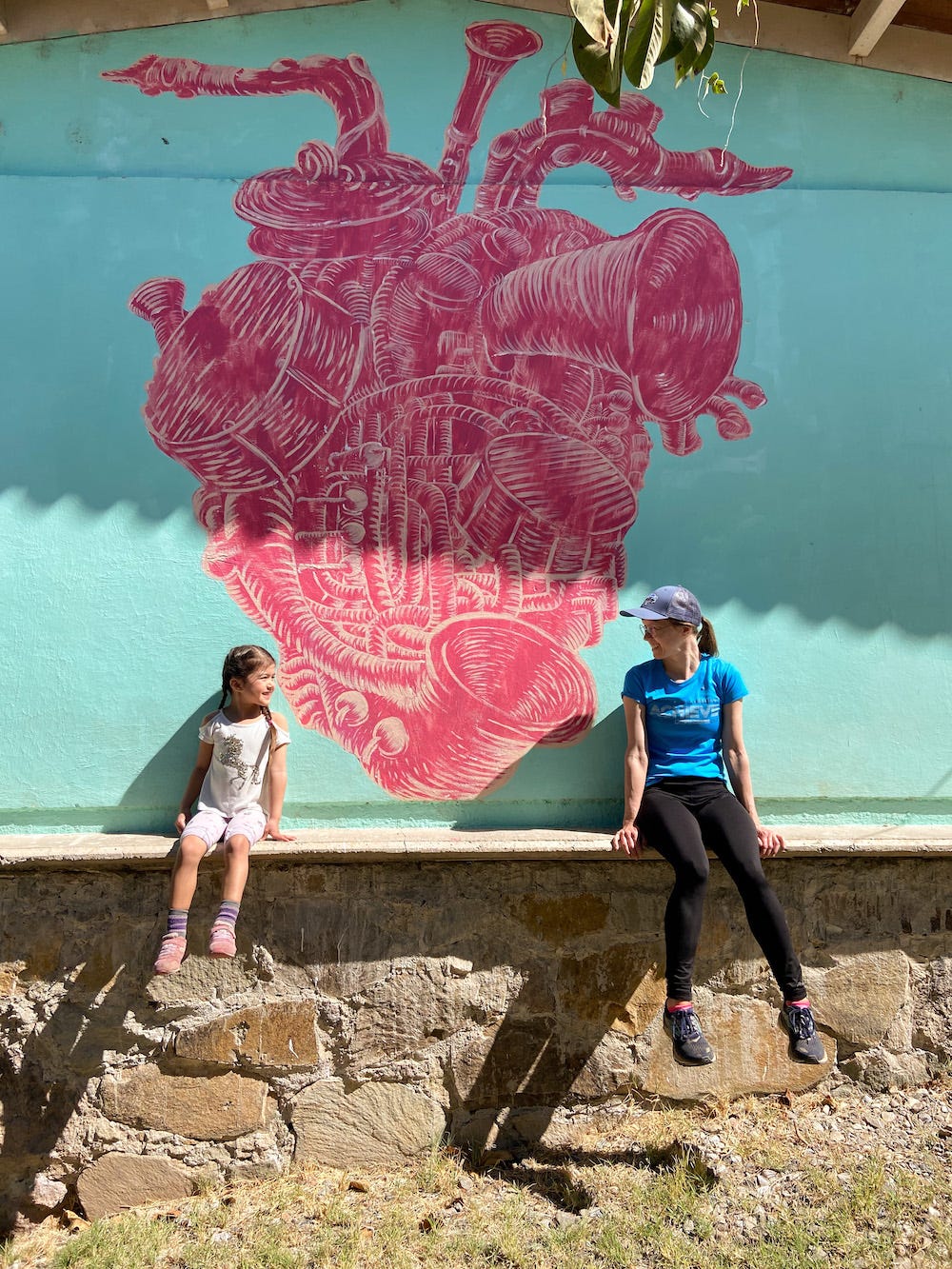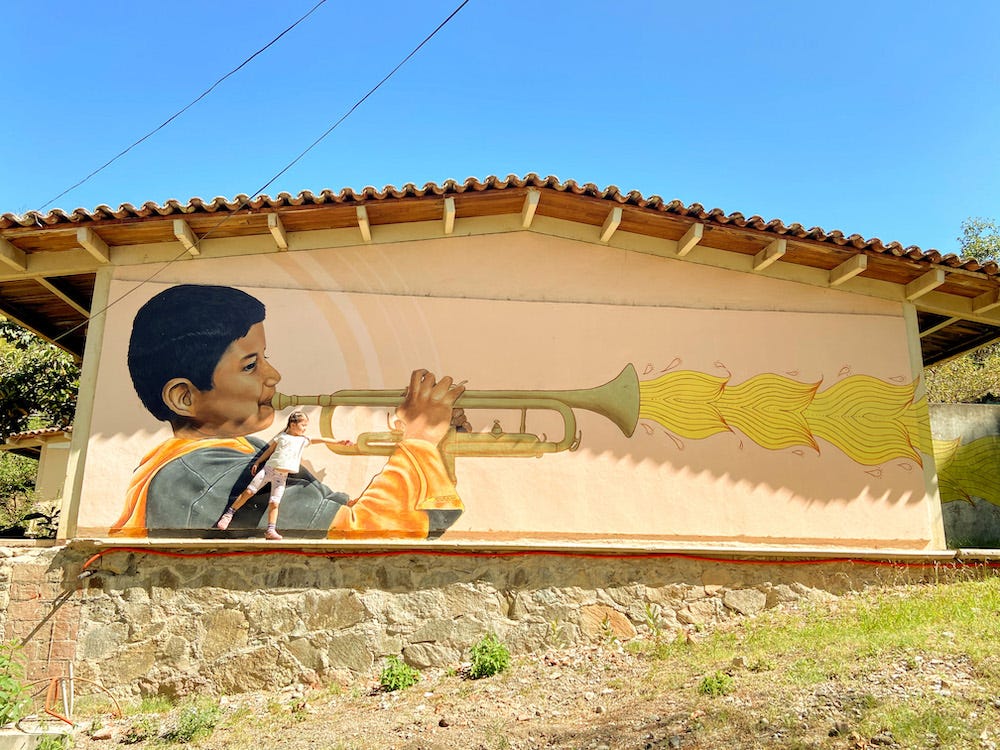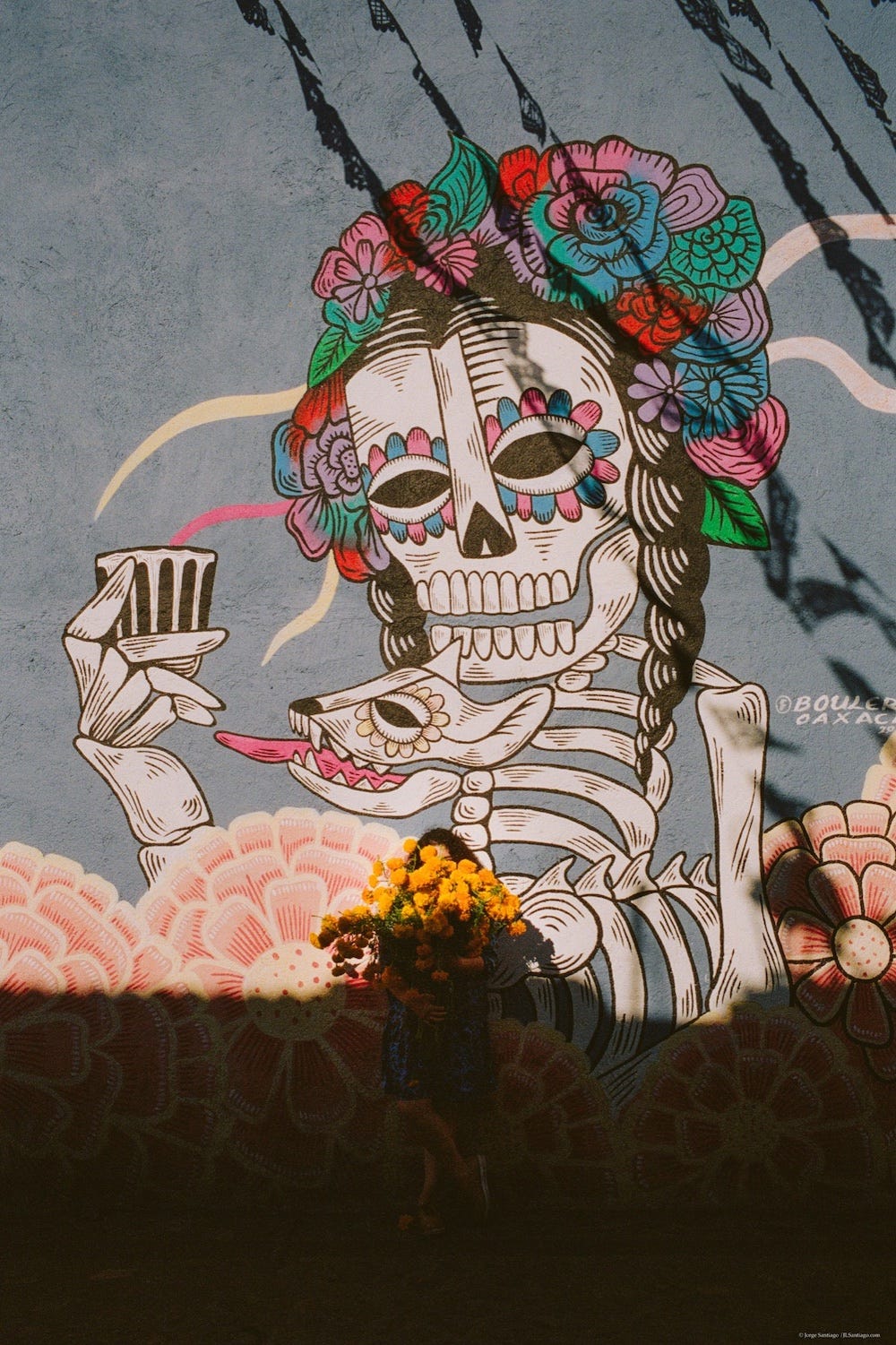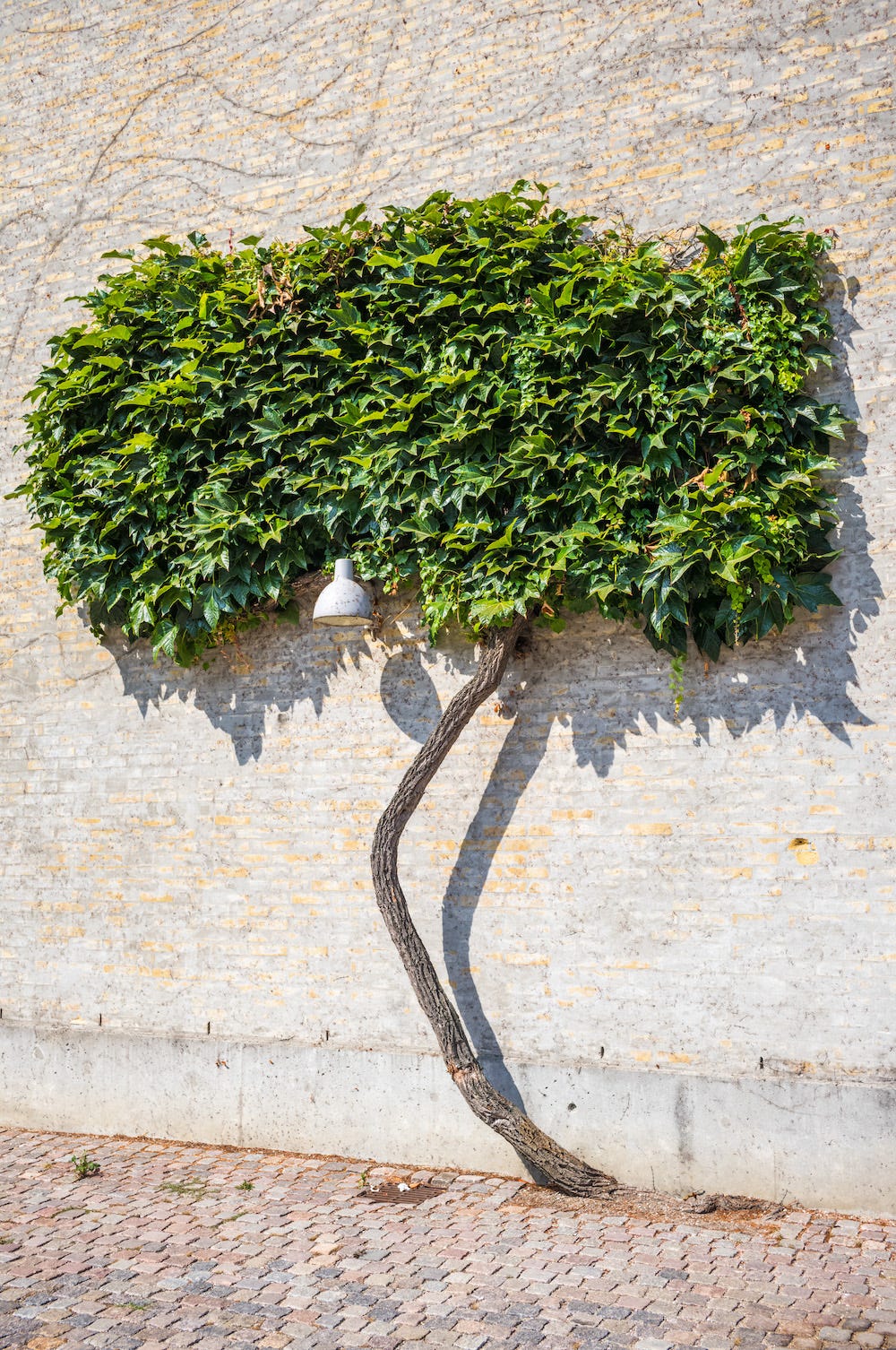
On Instagram recently I saw a quote: money is energy.
The image involved a) a kimono b) heavy beaded jewelry and c) a tropical country, so it screamed WOO and any serious responsible person should have ostensibly paid it no heed.
But for me it became an earworm. Money is energy. Money is energy. Money is energy.
This is something a waif in the Maldives would say while drinking a $25 reiki mushroom coffee replacement in a handwoven fair trade bikini, I told myself.
But it also, maddeningly, felt right.
I have been struggling lately to remake my relationship to money. Like most artists, for me that relationship could best be characterized as tortured, antagonistic, troubled, hostile, lustful, resentful, broody, and overall quite unhealthy!
Where does this come from? Part of it is personal. I was never interested in money. The natural assumption here would be, well, because you had it. But I grew up middle class in Columbus, Ohio, with parents and stepparents who were teachers, counselors, and scientists. We drove used cars my entire life (Toyota Tercels the size of Skittles, creepy kidnapper vans with velvet curtains and mufflers held together by duct tape, etc), all of our vacations involved camping, I never went to summer camp or took part in any after-school enrichment or traveled abroad.
We were not poor, but we were definitely not rich. I had scholarships to pay for my state college and I had to work for the entirety of my time there (weird, dinky little dorm supermarkets; coffee shops, etc).
All of this to say, my lack of interest in money wasn’t because I didn’t register it as a necessity. I just knew from an early age that what I craved above all were passion and adventure, and I associated the pursuit of money with the opposite of that.
Cemented in my brain from, well, probably from at least middle school age was this tragic-beautiful-painful idea of living for what you love and therefore sleeping on the floor of dingy one-room apartments in Paris, surviving on coffee and cigarettes; or camping on the roofs of South American hostels in the same ratty jeans for seven months and spending $1.25 a day on dubious empanadas (real lived experience).
The further something was from money, the closer it was to life. I still want so badly to believe this is true – I can feel my soul longing to throw itself behind this idea like the overwrought, righteous little backpacker I once was – but alas, I’ve grown up. There is money in everything. The plane ticket to Peru. The framing of a $1.25 empanada as enlightenment.
Too much money can certainly remove people from the basic essences of living, and from common humanity – but so can too little money. In associating money with something greedy, dirty, removed, soulless; with “selling out”; with corruption and alienation, I long assumed that not having it – or much of it – conferred nobility and honor.
It is really, really hard to let go of this idea. Even now, writing this, I want to believe it is true. And yet after fifteen years of working as an artist, seeing so many artists I know struggle to even do their work – returning to school for degrees they don’t really want in the hope of getting jobs they don’t care about; taking random underpaid work to fund what they love; spending hundreds of hours applying for paltry grants in competition with 1,000 other artists; earning absurd poverty wages for art that took painstaking care and years to produce – I no longer believe this truth.

I think, rather, that the notion of noble artistic poverty is a beautiful one meant to contradict our society’s seemingly fundamental edict that money = worth. No, the artist says, imagination, meaning, truth, connection, spirit, love, liberation, beauty, presence, collectivity = worth.
But it’s a false dichotomy. Money can feed toxicity and destruction and separation and the gross hoarding of more money, but money can also feed imagination, meaning, truth, connection, spirit, love, liberation. And in fact, without enough money, all of these shrivel.
It’s not a zero-sum game, an either-or, a purity test. Rather, it’s a question of value and priorities.
What, as a society, as a collective, do we value? Accepting that money is energy, where are we putting our energy?
And the societal answer is mostly: big tech, corporate healthcare, marketing, sales, and weapons. Technology many of us agree makes us miserable and lacks fundamental ethics and is actually quite dangerous; corporate healthcare that makes us sicker; marketing and sales that pummel us constantly with the promise that we can buy our way out of our ever-accumulating global crises; a military whose budget is greater than that of China, Russia, India, the UK, Germany, France, South Korea, Japan, Saudi Arabia, and Ukraine combined, waging wars we often protest in vain.
During my Mindfulness-Based Stress Reduction (MBSR) course, we had to keep a careful list of everything we did and consumed for a week. Then we had to note how each item/activity made us feel.
The two activities that made me most stressed and depressed were:
1) being on my phone and
2) driving
The ones that made me happiest were:
1) being in nature
2) spending time with friends
3) reading and
4) meditating
Tell me which ones – fossil fuels and Facebook or public parks and community? – get the funds.
So this brings us to the question. Where do we want to put our energy?
France spends more than $300 million in public music funding. England: $200 million. Spain: $100 million. The U.S.: less than $10 million.
Germany and France each have a national budget for culture around $2-3 billion dollars. The U.S., a country approximately 30 times bigger: $155 million.
Australia spends nearly $300 per person on the arts. London, England: approximately $250. Finland: $95. Germany: $85.
The U.S.: 47 cents.
Oaxaca, where Jorge is from, invests heavily in art, so much so that you can’t throw a stone without hitting a dancer choreographing an abstract piece involving full-body nakedness and mud. The city attracts and funds artists. The tourism industry also helps to fuel and sustain traditional arts, including the carving and painting of traditional wooden sculptures (alebrijes), rug weaving in the indigenous villages of the Oaxacan valley, basket crafting, textile dying, leather work, and candle-making. There are certainly issues with this tourism model in particular – which has led to a surge in fakes, copycats, and cheapened goods – but it undoubtedly places a strong emphasis on art.
The result is one of the most beautiful and beloved cities in Mexico. Whole tours are dedicated simply to street art: uncanny, brilliant, ever-changing, often critical and rebellious. Papel picado – traditional crepe paper carved with intricate designs – flutters above the cobblestone streets; photography exhibits line the stone archways of the Zócalo; concerts pop up in the evenings in the city’s plazas; open-air museums host exhibitions, talks, workshops, and events; and movie, music, book, and children’s festivals take place in venues around town.

Many people might think, oh nice, art. Okay, great to be able to look at an interesting portrait on your daily walk. Or perhaps some avant-garde dance thing on a date night if you’re feeling adventurous.
But investing in art doesn’t end with art. It engenders a different kind of society: far more creative, rebellious, spontaneous, inventive, and fortified by the sense of community, and that too is palpable in Oaxaca.
Here’s a kid’s hopscotch tournament in the Llano. Here, during Day of the Dead, is an entire troupe of guys cross-dressing as devil fairies on stilts. Here are people of all ages dancing salsa outside on a Wednesday night. Here is a huge protest against McDonald’s in the Zócalo, here’s another against Monsanto’s effort to kill indigenous corn in the Sierra, led or amplified by artists.
Art is not simply nice for art’s sake: art remakes society. Art shapes collective dreaming and imagination and experience.
I have been writing full-time now for over fifteen years. “Professionally,” if you want to call it that, if having an advanced degree confers professionalization, for ten.
Most of that time – the vast majority – I have given my work away for free.
First, in blogs. Then, in a magazine I founded, in order to elevate my own career and that of other women writers. Several friends published stories in that magazine that led to incredible books, including this one and this one and this one.
The stories I published there, often ruthlessly edited by my colleagues – all as eager and hungry as I was, edging one another along, making one another better and stronger – propelled me to a new level as a writer. They eventually led to major publications, including in Harper’s, The New York Times, Pacific Standard, the Guardian, and elsewhere.
Over these years, I published two books. The advances I received for those books felt like miracles, not like something I deserved for years of careful, skilled work. I felt almost guilty about them, even though they did not provide a sufficient living wage for years’ worth of work. I suppose I thought what I wrote – essays about motherhood in particular, and about ideas like slow living and connection to the natural world and the bonds between women – wasn’t much valued, even though I believed deeply in its value.
I suppose I thought I’d be lucky to be paid for it, which is often the line for artists: you get paid for that? Even though we’d never ask this about someone who, say, chooses the color of Facebook’s “like” button, or spends their days doing market research on people’s attitudes towards bananas, or convinces people they urgently need a subscription to a spreadsheet-organizing app, it’s a given for artists.
The notion that art is mostly play is a fanciful one the Internet has happily nourished. Maybe it is largely play for the hobbyist, who paints for fun on a Sunday afternoon, or makes music in the occasional jam session with friends, or crafts short stories in his spare time. This is where things can get a little tricky – so many people want to try their hand at writing, or painting, or photography, or music, and this is wonderful! This kind of play is healthy and nourishing. But so often this experimentation and exploration gets confused with professional art. It’s all just fun and games, drawing rainbows with your six-year-old.
But for the full-time, professional artist, art is work like research is work for the scientist and code is work for the engineer. It is ridiculous to have to say this, but I think of an acquaintance of mine – a lawyer – who once said to me, “I’ve thought about becoming a writer,” as if this were something she could just pick up from one day to the next. I wanted to say to her, “I’ve thought about practicing law. That, or plastic surgery, once the kids are out of school.”
Art is work. Art is work. Art is work. It requires years and years of training, diligence, skill, and self-discipline. It can start or grow or shift in play, but it’s not play. It’s dedication and discernment and refinement, over and over, day in and day out, whether you feel like it or not. It’s solving puzzles of intuition, taste, creativity, vision, and meaning, over and over again, often with no clear guidelines or guidance.

I spent years writing my books. I spent one twelve-hour day at the kitchen table refining a single page of Ordinary Insanity about the neurobiology of the maternal brain so that it slipped across the reader’s imagination like a story even while packed with information about the hypothalamus and the amygdala. I’m not saying this to whine or brag, but to illustrate the fact that what should feel effortless – the leap of the ballerina, the swirl of hay bales in a light-drenched field, the flurry of fingers on violin strings – is the result of so much practice, so much effort, so much care.
Notice how hard the ballerinas are breathing when they take their bow.
So, at age 41, I’ve come to the realization that I’m going to stop giving away my work for free. Honestly, I feel a bit vexed about this. I’ve had the notion beaten into me so hard by social media over the years – and now by Substack – that artists must build an audience above all (“ a platform”), and hey, it just so happens that the most convenient way to do so is to create a bunch of high-quality free content for massive tech corporations!
I’ve internalized the idea that my art should be free – for audience and also for nobility, purity. But there’s nothing noble and pure about stressing all the time about money because I’m giving my professional work away. And I don’t think reinforcing the notion that art should and does cost nothing aids a society that gives so little energy to art to begin with.
So here is my invitation to you: fund art, join my community, and let’s create together.
Going forward, most of my writing will require a paid subscription. To be super-clear here: this is still only $5 a month! We’re not talking yacht-and-ski-cabin luxury. What do we spend $5 on? Pink water from Starbucks, parking, a random app, a soft pretzel, some shiny lip gloss from Target placed strategically next to the cash register. And/or: ART!
Those of you who can’t afford this right now and still want access can simply write me an email and I’ll comp you a subscription, no questions asked.
For the rest of you: let’s put our energy into this together. Let’s build something. Let’s make some art and change our lives with it.
I am moving into a major life shift right now. My family and I are about to move overseas (Big news coming!), we are transitioning into homeschooling, we are breaking away from the dominant paradigms to ask how we can live differently, slowly, in love and presence and liberation.
Do you want to be part of this? If so, commit. To art, and to us.
Here is what I will create going forward:
My usual steady supply of essays on trying and failing and trying again to be a more mindful human being.
A strong community interested in mindfulness, slow living, and liberation, with weekly community threads.
Guest essays, Q&As, book reviews, recommendations, and new and creative forms exploring the questions at the heart of Terms of endearment.
You’ll receive two posts per week, as well as access to all community threads and archives.
This is me saying: art deserves to be funded.
Art deserves energy.
And art will create abundance.
Cheers, my friends, to you, to us, and to a new era of creation together.



